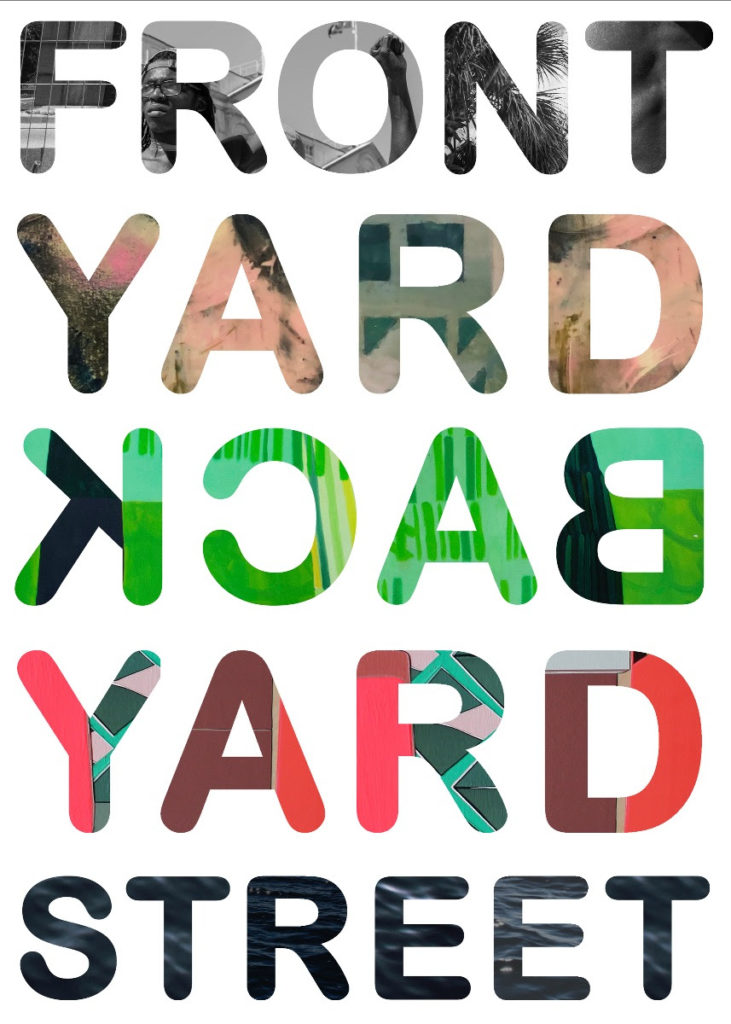Frontyard, Backyard, Street
Exhibit dates: September 11th – October 24th, 2020
Opening reception:5-8PM September 11th 5-8PM
Location: Main Gallery
Redux Contemporary Art Center is excited to present ‘Frontyard, Backyard, Street’ a group show featuring the work of Christian Birk, Susan Gregory, Dontré Major, Hirona Matsuda, and Alex Waggoner. Redux’s group exhibitions present the public with an opportunity to better understand, and engage with, the work of a collaborative unit of artists who strive to produce a cohesive, shared statement.
‘Frontyard, Backyard, Street‘, invites the neighborhood to share five artist’s sense of place in their city landscapes. The group uses a variety of media to depict their interpretation of an urban Charleston, celebrating the vibrancy, while, also, considering the inevitable change of our city landscape. As the surrounding street blocks team with energy and layers of stories unfold, the artists consider: What is the character of the city? What history is necessary to protect and tell?
About the Artists
Christian Birk makes paintings that explore place: interrogating the systems and structures that create, order, and define this concept. Emphasizing form, color, and composition, they make work to map how place functions in a world with no private property. Lawns, houses, streets, and parks structure and divide the urban environment. This dichotomy of public versus private forms and limits our ability to experience a place. From landscaping to public transportation to infrastructure, the value of private property creates an idealized image of Charleston, which is enforced and expanded through gentrification and policing. But is this image an accurate representation of the city and its history? In their paintings, Birk creates dense, energetic compositions that look critically at place now, historically, and in the future.
Susan Gregory makes interpretive landscapes based on observations gathered while walking. A routine commute before the quarantine and a pacifier during, these times are often accompanied by her growing son. Through the years, she has been interested in how symbols, characters or objects cue our mind and conjure memory, becoming triggers for sentiment and nostalgia. Passing folks regularly on the street, the artist recognizes there is a daily story among us and she is reminded of our interdependence and commonality. Paintings build layers in encaustic wax and oils using a palette of lowcountry light, house paint hues and surveyed sidewalk. Collaged atop is the tight contrast of collected imagery and pencil drawings. Often employing quilt motifs in her compositions, Gregory evokes tradition with non-traditional subject matter, referencing our common weave and commemorating this place in time passing for the artist as well as the surrounding neighborhood.
Dontré Major feels as a Black American and Black photographer, given the current political climate with more exposed racism during this unfortunate pandemic, that it is necessary to focus on these issues of injustice. His work conveys the emotions, determination and protest of the Black community and those who support the movement. From said protest, to the demanding of the removal of racist and oppressive statues from public grounds in Charleston and across the country, Major’s photographs show the passion, anger, and all around sick and tiredness of it all. Generations of mistreatment and abuse from the police, judicial system and government have brought us all to this moment in history.
Hirona Matsuda captures the cycle of reinvention that the city goes through as forces continually create the need to rethink how we fit into this place. For this work Matsuda took inspiration from the large trash piles that the city lets its inhabitants put on the curb once a week. These personal time capsules have always intrigued her as she sifts through the debris looking for material to use in her work. Each pile tells a story of the people that live/lived in that house, their idea of beauty, comfort, family, death. Often these discarded items are taken to be repurposed by other individuals in the neighbourhood creating a web of interconnection that goes largely unseen. It is also a reminder that we are all in this together whether in good times or in bad.
Alex Waggoner’s paintings are based on the traditional Southern urban landscapes and architecture that surround her. Employing the dreamy color palette abundant in the Charleston environment, she contrasts these images with meticulous paint application. Through this exploration of architectural individuality proliferant in Southeast, she aims to encourage a thoughtful dialogue concerning architectural historical significance, forgotten spaces in-between, and the impact of gentrification. With her recent move to Atlanta she is currently exploring the rich history of Atlanta and the integral role of architecture in Atlanta’s story. She continues to enjoy the spaces in-between.

